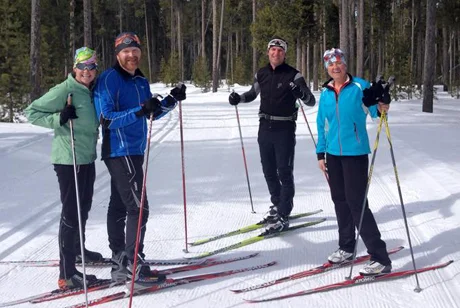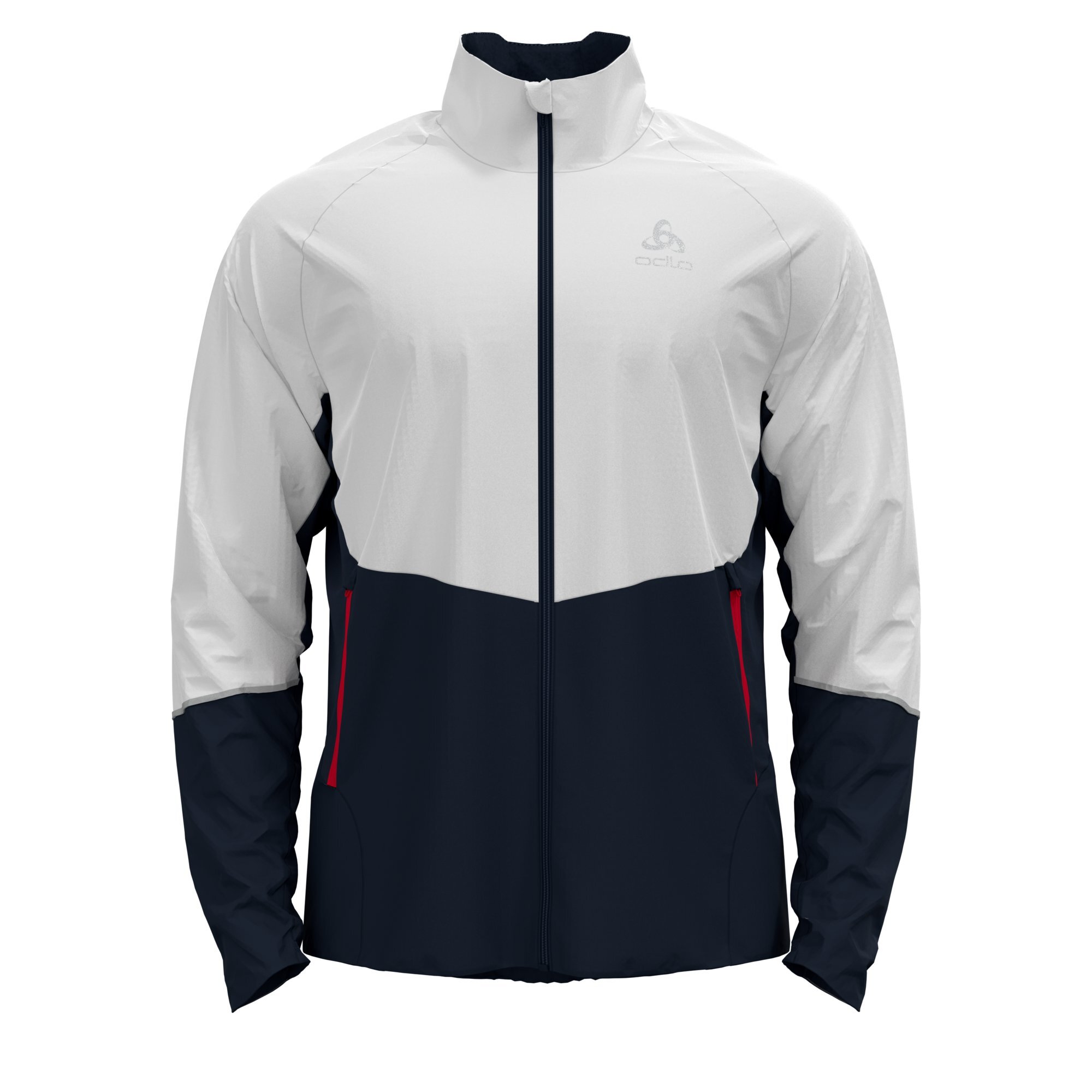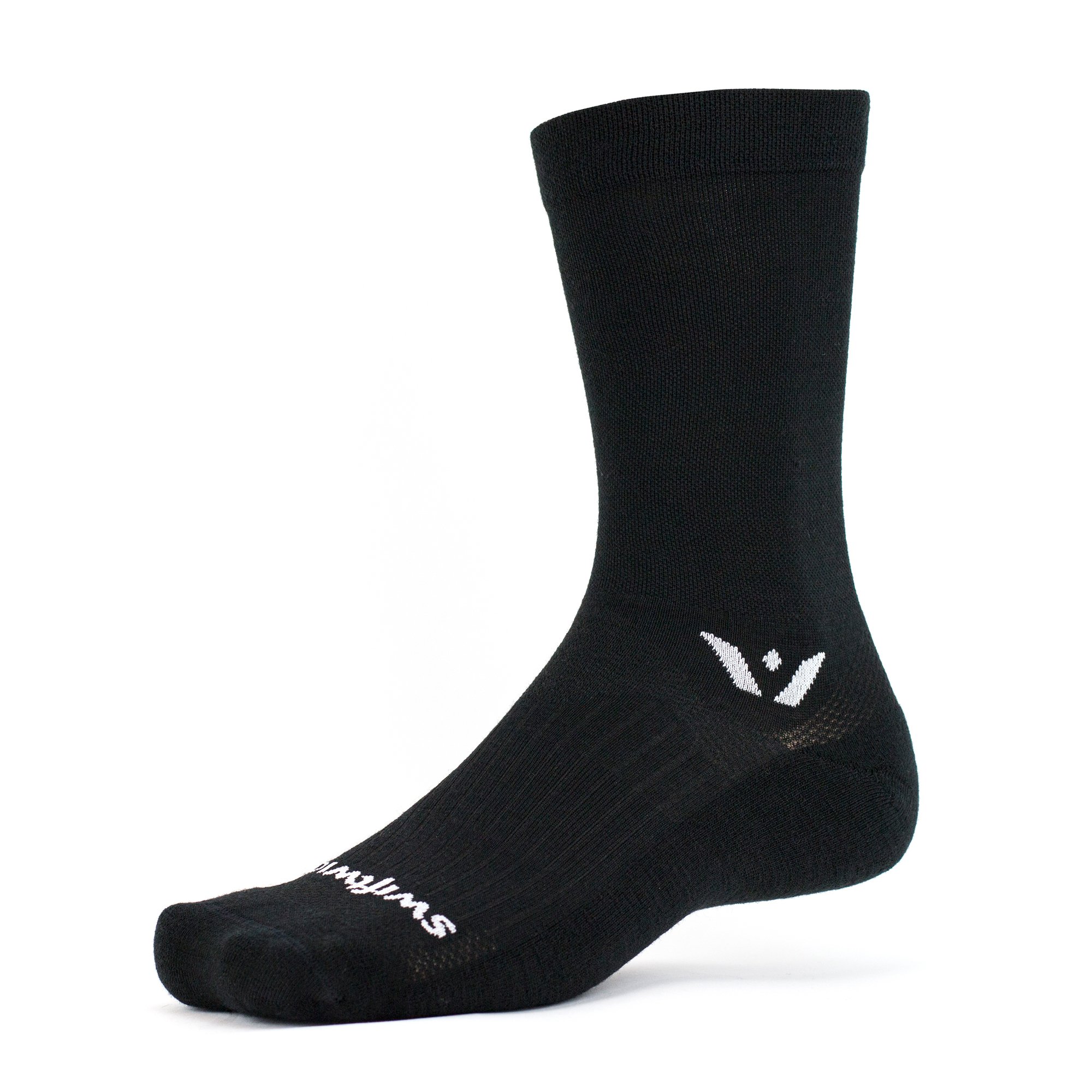Dressed for cross country skiing on the trails in West Yellowstone
Often on the cross country (XC) ski trails the clothes that many of the uninitiated wear are malfunctioning…that is, they are dressed for downhill skiing wearing insulated ski jackets and pants, alpine ski gloves or mittens, and ski goggles. XC skiing is a form of recreation that involves moving and thus lighter clothing is appropriate. Recreational XC ski garb is versatile, functional, and fashionable, which is different than either the outfits for downhill skiing or the suction suits worn by the XC ski racers seen at the Olympics.
Currently, the most popular cross country ski apparel is from companies such as Odlo, Craft, Daehlie, Sporthill, Swix, and others, but what is important is that the products fill a function that includes comfortably allowing movement, protection from the outdoor elements, and transporting perspiration out to keep skiers dry. Of course, skiers need to heed the weather by wearing layers (base layer underwear, pants and tops, and outerwear) and when its colder, more layers or thicker layers are necessary.
Odlo Engvik jacket
XC Ski Jacket and Pants
A jacket for XC skiing provides a layer to keep warm and also a way to cool off and transport perspiration away. These jackets have a mesh liner and material that is comfortable when you have to zip up the collar on a very cold day. The hood on the jacket is useful if it suddenly gets cold out on the trail. The high-hip fit keeps you warm and the zippered side pockets can be closed to avoid losing pocketed items. In some jackets the pockets have a mesh liner that allows for the skier’s heat to escape when working hard. The jacket arms might have extended cuffs, which are a nice touch to keep snow out of your gloves. The inside chest pocket has a zipper and a hole for a phone and earbuds for the times that you may want musical accompaniment on solo trail outings.
Comfortable pant for XC skiing
The pants for XC skiing may be light overpants with zippers along the entire length of the legs and at the ankle there is an elastic area that may be closed with a zipper. This pant ankle set-up is a most significant aspect of the pants because it tightly fits around the boot and keeps snow out of the shoe top to avoid getting wet socks while skiing. To prevent losing a set of keys, zippered side pockets (on pants or jackets) allow a way to lock away your valuables. The base layer also known as long underwear is intended to provide a dry layer next to the skin, but if there is lined material in the pants it may be enough to stay warm with or without a base layer underneath.
Other Aspects of the XC Ski Outfit
Jack Wolfskin Alspitze base layer. Merino wool provides warmth, optimal temperature regulation and odor resistance
Base layers in various thicknesses can correlate to warm and cold days. Moving perspiration away from the body is very important and lightweight underwear on those nice winter or spring days are the way to stay dry, but on the coldest days use a heavier or thicker base layer pants and a top that may have a turtleneck.
For your head, a light hat or headband is the way to go. Light Lycra neckies are good for your face but when it is very cold (below 15 degrees Fahrenheit) try a heavier neck gaiter like you’d wear when alpine skiing.
Swiftwick Pursuit 7 sock
Socks and gloves are an entirely other matter that could be covered in a separate article. In short, parameters for selecting socks include the sock material for perspiration, thickness, spacious comfort for your toes, and height of the sock on your leg. Socks for downhill skiers are intended to accommodate the higher alpine ski boots and this may be too high on the leg. Expect to pay as much as $25 for a pair of quality socks these days. The Swiftwick Pursuit 7 sock is an example - it is constructed with fine-gauge Merino wool to ensure a great fit in any boot and provide optimal warmth without any of the bulk. The thin fabric hugs your feet to avoid bunching, and a four-inch cuff at the top ensures that your socks don't budge with the movement associated with XC skiing.
Different pairs of gloves will allow adjusting to the temperature ranging from heavier insulated mittens or two-fingered gloves for the really cold days to lightweight gloves needed for the springtime. One of the glove features to consider is the patch of soft material found on the outside part of the thumb, which is useful for nose wiping.
Tifosi Rail sunglasses - light and no fog
For eyewear opt for sunglasses rather than goggles. Sunglasses allow the air to flow while goggles tend to fog up when you get hot. Oversized glasses that have interchangeable lenses for sun or flat light are great for XC skiing. Here’s a link to Pioneer Midwest to shop for XC ski clothing on line https://www.pioneermidwest.com/shop/







